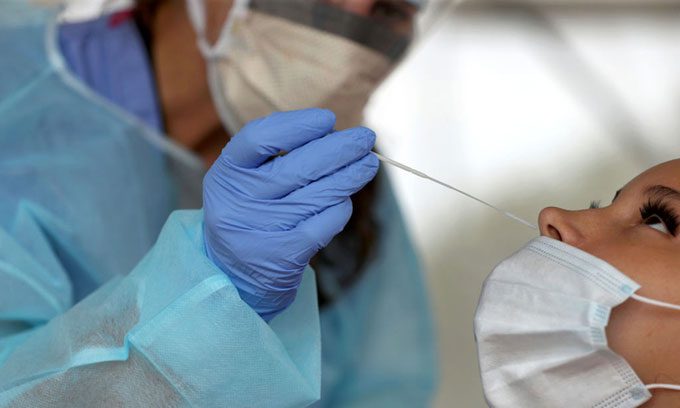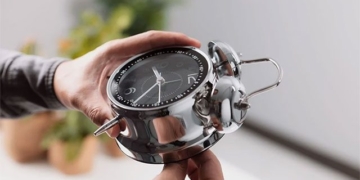A new method using reusable circuit boards and sensor sticks significantly reduces the cost and time for Covid-19 testing.
Scientists at the University of Florida (USA) and National Chiao Tung University (Taiwan) have developed a rapid and sensitive testing method for Covid-19 biomarkers, reported Phys on May 18. The new research was published in the journal Vacuum Science & Technology B.

Covid-19 testing can be expedited with the new method. (Photo: Boston Globe).
Previously, the research team had presented findings related to biomarkers for epidemics and emergency cases such as the Zika virus, heart attacks, and cerebrospinal fluid leaks. This time, they developed a sensor system that provides results in one second, faster than current Covid-19 detection methods. “This could partially address the issue of slow Covid-19 test turnaround times,” said Minghan Xian, a chemical engineering graduate student at the University of Florida.
Detecting the presence of the virus requires amplifying the number of biomarkers, such as copies of the virus’s RNA in the polymerase chain reaction technique commonly used for Covid-19 detection, or amplifying the binding signal for a target biomarker. The research team’s method focuses on amplifying the binding signal.
“Our biosensor sticks are similar in shape to commercial test sticks, with a small microchannel at the tip for the test solution. The microchannel contains electrodes that come into contact with the solution. One electrode is coated with gold, and antibodies related to Covid attach to the gold surface through a chemical method,” Xian explained.
During testing, the sensor stick connects to a circuit board via a connector. A short test signal is sent between the gold electrode with the attached Covid antibodies and another auxiliary electrode. This signal is then relayed back to the circuit board for analysis.
“Our sensor system, a circuit board, uses transistors to amplify the electrical signal, which is then converted into a number displayed on the screen. The magnitude of this number depends on the concentration of the antigen, the viral protein, in the test solution,” Xian stated.
While the sensor sticks must be discarded after use, the testing circuit board can be reused. This means that testing costs will be significantly reduced. This technique is also highly versatile and can be applied to detect other diseases beyond Covid-19.
“By changing the type of antibody attached to the gold surface, we can repurpose the system to detect other diseases. The system can serve as a prototype for low-cost protein biomarker sensors that provide rapid results for clinical use, in operating rooms, or at home,” Xian remarked.



















































